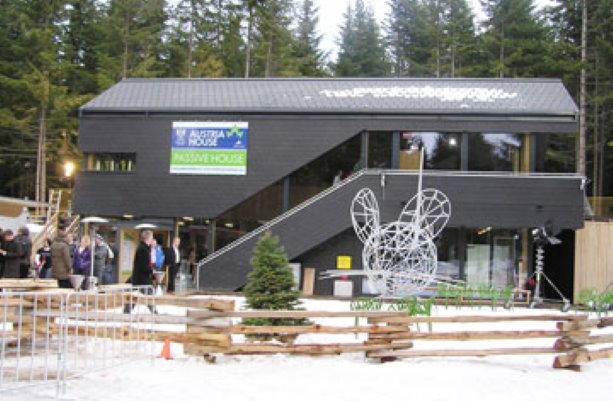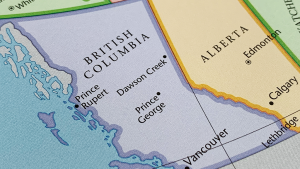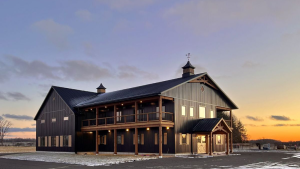Canada’s first passive house, opened in Whistler, B.C. and it exceeds LEED Platinum energy standards by 50 per cent.
Canada’s first passive house, opened in Whistler, B.C. and it exceeds LEED Platinum energy standards by 50 per cent. Whistler’s Austria House, showcases what happened in Tyrol where 700,000 residents were pushed onto 13 per cent of the land base in a highly-sensitive Alpine region.
It forced government, industry and academic to focus upon energy savings and ecological friendly construction means, said Hannes Gschwentner, vice-governor of Tyrol, one of Austria’s nine regions.
Passive building technology emerged and is used in single and multi-residential developments.
A 354 unit social housing complex is now under construction in Austria, as are offices, commercial buildings and even utility structures such as police stations.
They only require 10 per cent of the energy employed by a conventional structure built to current code requirements.
The structures use solar or geothermal for heating and hot water.
There are 15,000 passive homes in mainly Germany and Austria today.
Canada, according to Austrian research, has about 50 homes that are similar to passive houses.
A true passive home has to meet stringent requirements needing no more than 15 kWh per square meter per year for heating or cooling.
It also must meet an air-tightness test.
The standards were originally developed in May 1988.
About 60 Austrian companies have expressed interest or already have brought sustainable products or technology to Canada.
An example is the Austrian company, Leitwind, which provided the noiseless and gearless wind turbine for Grouse Mountain, known as The Eye of the Wind. It is now supplying 25 percent of the ski resort’s power needs.
Others are also getting into the act with Austrian companies providing a range of green products and services.
Dr. Harald Gohm, chief executive officer of the Tyrolean Future Foundation, said Austria is interested in building relationships with businesses that can use the green technologies being developed.
That co-operation between companies was seen in the construction of Austria House.
Sea to Sky Consulting Inc. served as project manager for the construction.
Consultant Helene Pendl said the Whistler structure was not only passive, but also a “passive green” structure utilizing natural products such as wood, a heat recovery system and volcanic rock for the floors.
The general contractor for Austria House was Durfeld Log Construction based in Whistler.
Matheo Durfeld, said one main difference in passive house construction is preventing thermal bridges that can conduct cold.
Also, components of the wall were heavily taped to provide a seal that would prevent warm air loss.
The wall was built from European milled 3×4 inch lumber that is doweled together into two-foot wide panels.
These are used on the interior wall of the structure, making a solid core rather than drywall over a frame.
“You can actually store energy in the wall,” said Durfeld, adding that wood acts as a thermal mass.
On to the exterior of the lumber wall, three-quarter inch plywood is attached.
It is taped at the seams.
Another frame is attached to the wall to store about 12-inches of insulation and over this is placed a DVD fibre board that is waterproof but breathable, to serve as a rain screen.
Wood siding is then added.
The roof is constructed in a similar manner.
Durfeld estimated the walls and roof reach an R56 rating insulation factor, more than double what is seen in B.C.
The cost of building to this passive standard in Canada hasn’t yet worked out for an average project.
“No one can really tell yet,” said Durfeld.
Materials were milled and shipped to B.C., however, the province could supply its own wood.
There are also different combinations that can be used to achieve the thermal wall massing needed, he said.
In Europe, it’s estimated passive construction adds seven to 15 per cent to building costs compared to European traditional building costs.
“It is more expensive than conventional housing,” he said. “We will not find out the real cost until we do it ourselves.”
Whistler Austria House will be gifted to the Whistler resort municipality following the Winter Olympic 2010 games.











Recent Comments
comments for this post are closed